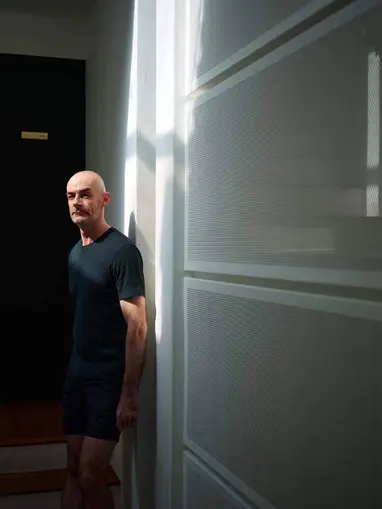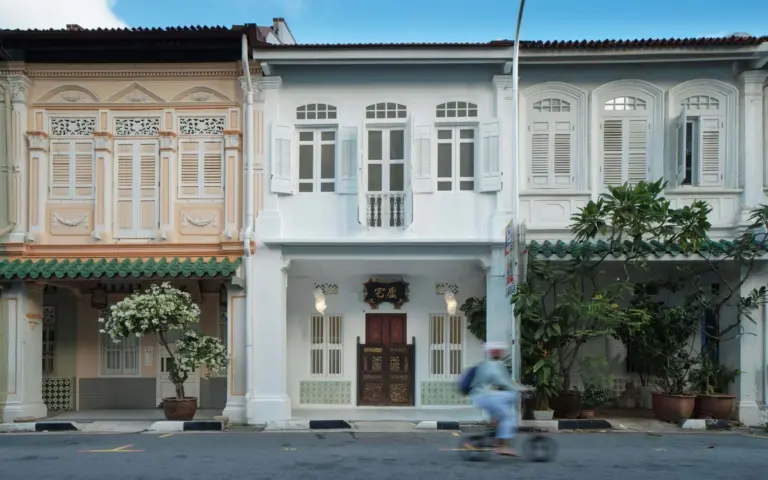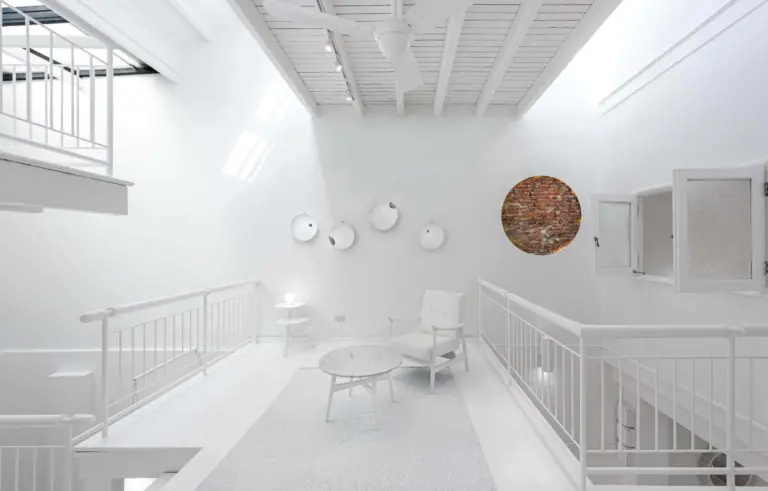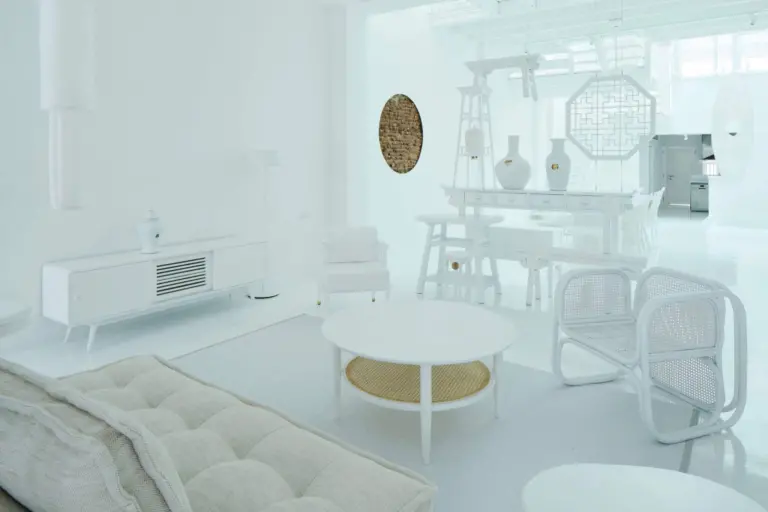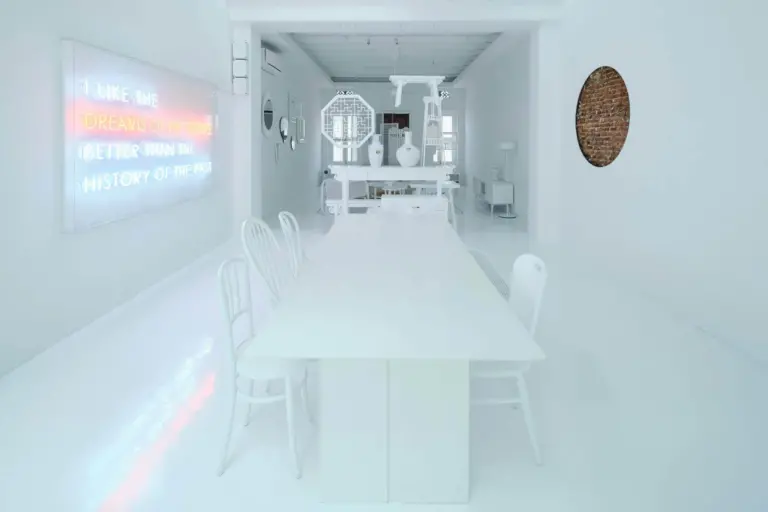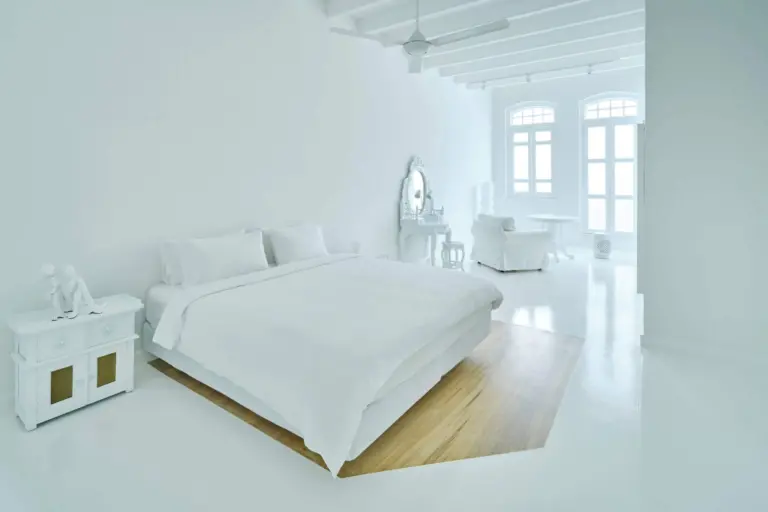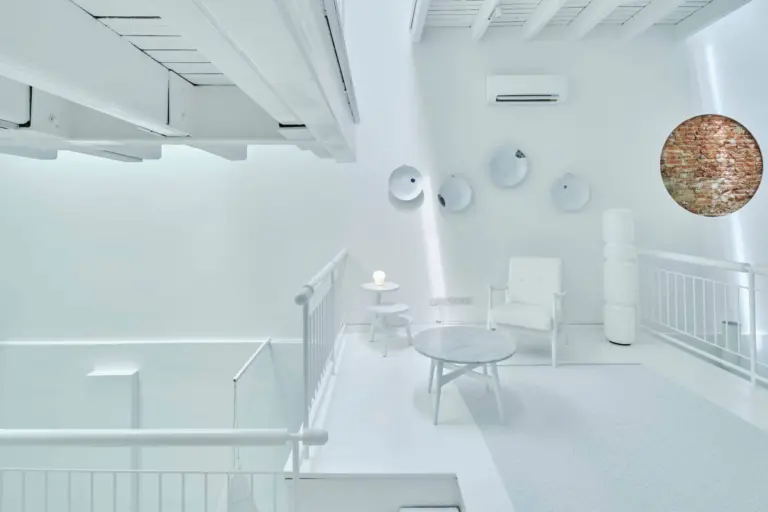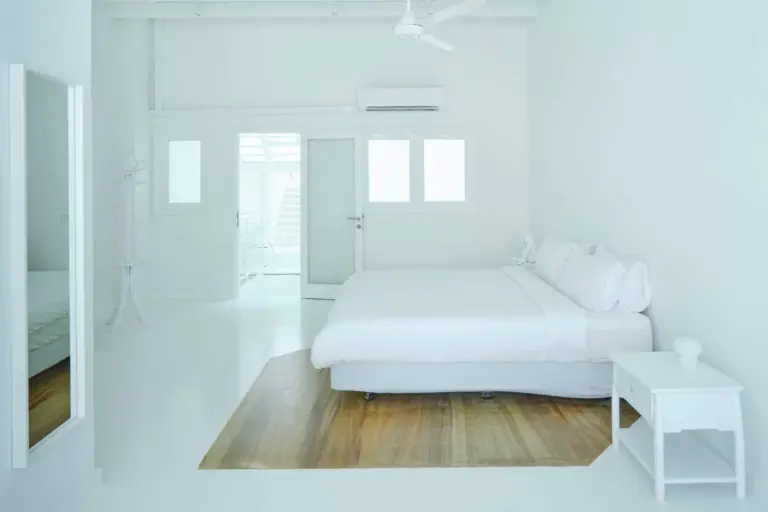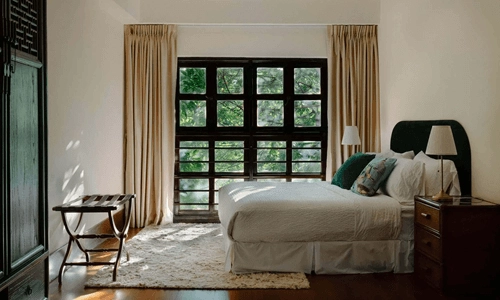The house was likely built in the 1890s, with ornamentation added in the following decades as it changed hands. It was later gazetted as a conservation building by URA in 1991. Located next to the esteemed NUS Baba House, the house sits within Singapore’s historic conservation district of Blair Plain – the larger low-lying area stretching from Kampong Bahru Road to the sea.
The exterior of the house is painted a unique burnt orange, with its quintessential jalousie windows and geometric decorative features highlighted in white. Above the first floor windows are a pair of plaques stylized to look like a Chinese scroll, and an ornamental canopy roof made from green Chinese glazed tiles. Georgian fanlights adorn the three windows on the uppermost floor. Most uniquely, the back of the house also features a narrow but functioning spiral staircase connecting all three floors. The staircase was historically designed for night soil labourers picking up buckets from the different floors in the days before public sanitation infrastructure.
The concept of Vignette House is premised on Figment’s desire to pay homage to the owner of the home, Hugh Tan’s contributions to Singapore’s theatre scene. In thinking about theatre in relation to art, the house homes in on the theatricality of materials, in particular the various meanings that materials come to take on as people (both individuals and communities) interact with them. The two featured artists, Fajrina Razak and Nandita Mukand, exemplify this theme in different ways. Their works augment the house with meaningful stories and splashes of colour.
Not too far from the sea and not too far from town, the historical residential district of Blair Plain is for those who prefer a quieter street with exciting places to visit nearby.
An independent coffee roaster, a restored Peranakan home turned museum, and even a classic barber tucked in an attic of a shophouse – the area is thriving, lively, and laidback at the same time.
For those interested in architecture, don’t forget to explore the different styles in the district, from ornamental facades of the ‘Late Style’ to more pared down Art Deco shophouses.




















